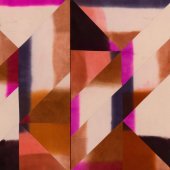
Hamann Judith
Aunes
Label: Shelter Press
Genre: Electronica / Ambient / Experimental
Availability
- LP €24.99 In Stock
Audible location sound embeds the music in its place of making, as in the delicate duet for church organ and wordless singing ‘schloss, night’, where shuffles and cluttering in the reverberant church space form a phantom accompaniment, gradually displaced by a uneasy shimmer of wavering tones from half-opened organ stops. ‘Casa Di Riposo, Gesu’ Redentore’ documents a walk up a hill to an outdoor mass in Chiusure, layering voices near and far with footsteps, insects and other incidental sounds. Like in the work of Moniek Darge or Luc Ferrari, location recordings are folded on themselves in space and time, their documentary function dislocated to dreamlike effect. On other pieces, it is the emphatic presence of the performing body that grounds the music, whether in the intimate fragility of Hamann’s softly sung and hummed vocal tones or the clothing that rustles across a microphone on the opening ‘by the line’. The idea of a music inextricable from its material conditions is perhaps most strikingly communicated on the album’s briefest piece ‘bruststärke (lung song)’, composed from layered whistling recorded while Hamann suffered through an asthma flare up, the results halfway between field recordings of an imaginary aviary and the audiopoems of Henri Chopin.
More than any of Hamann’s previous solo works, a strong melodic sensibility runs through Aunes, even when, like on ‘seventeen fabrics of measure’, the music hangs together by the merest thread. At other points, Hamann’s love of pop music is more obvious: the rich synth harmonies of ‘by the line’ could almost be a melting fragment of a backing track from Hounds of Love. The expansive closing piece ‘neither from nor toward’ exemplifies the highly personal musical language that Hamann has developed in recent years through constant solo performance (and a rigorous discipline of instrumental practice), pairing two overdubbed voices with the boundless depth and harmonic richness of just-intoned cello notes, calling up Ockegham or Linda Caitlin Smith in its elegiac slow motion arcs. Hamann’s most personal work yet, Aunes arrives in a striking sleeve reproducing a section of a painting made from sewn pieces of dyed wool by Wilder Alison, a friend and fellow resident at Akademie Schloss Solitude, one of the temporary homes where much of this music was recorded.
